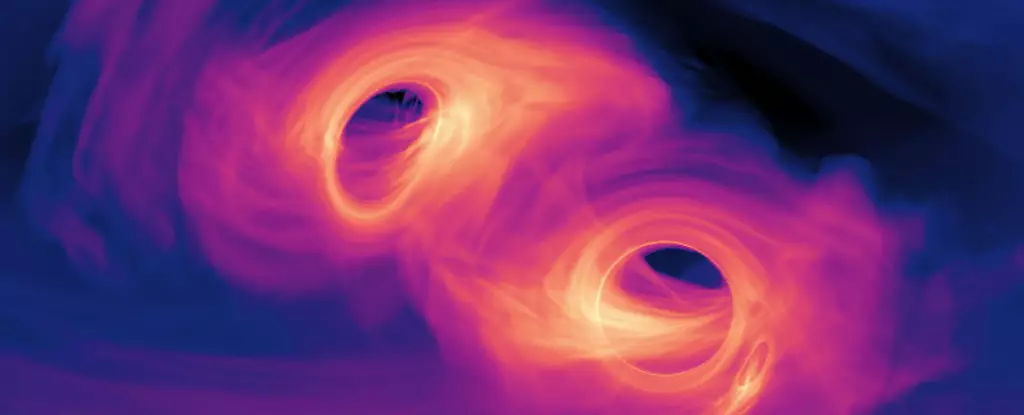One of the most intriguing concepts in astrophysics is the idea of Hawking Radiation, proposed by Stephen Hawking in the 1970s. This theory suggests that black holes can eventually evaporate over immense periods of time, emitting radiation in the process. Despite this groundbreaking theory, the actual observation of Hawking Radiation has remained elusive.
Recently, a group of European researchers has put forward a novel method to potentially detect Hawking Radiation. In a paper titled “Measuring Hawking Radiation from Black Hole Morsels in Astrophysical Black Hole Mergers,” the researchers propose looking at black hole mergers as a way to study this phenomenon.
Black hole mergers have long been predicted by theoretical models, but it wasn’t until 2015 that the first merger was actually observed by the LIGO observatory. Since then, multiple mergers have been detected, providing researchers with a unique opportunity to study the dynamics of these catastrophic events.
According to the researchers, when black holes merge, they may generate smaller black holes known as “morsels” that are roughly the size of asteroids. These morsels, due to their smaller size, could potentially emit Hawking Radiation that is detectable in the form of gamma-ray bursts.
While the idea of observing Hawking Radiation from black hole morsels is exciting, there are numerous challenges that researchers must overcome. For instance, the intense gravitational environment of a black hole merger may alter the spectra of the emitted radiation before it reaches our detectors.
Moreover, the detection of Hawking Radiation from black hole morsels could provide insights into areas of physics that are currently not well understood. The authors of the research paper suggest that this phenomenon could shed light on new physics beyond the scope of current collider experiments.
Another intriguing possibility is that these morsel black holes might have originated in the early Universe when the fundamental physics were different. If these black holes have persisted until the present day without evaporating, they could potentially contribute to the elusive dark matter that makes up a significant portion of the Universe.
The search for Hawking Radiation from black hole morsels represents a fascinating intersection of theoretical physics and observational astronomy. By studying the remnants of black hole mergers, researchers may unlock new insights into the nature of black holes, the early Universe, and the fundamental laws of physics.


Leave a Reply